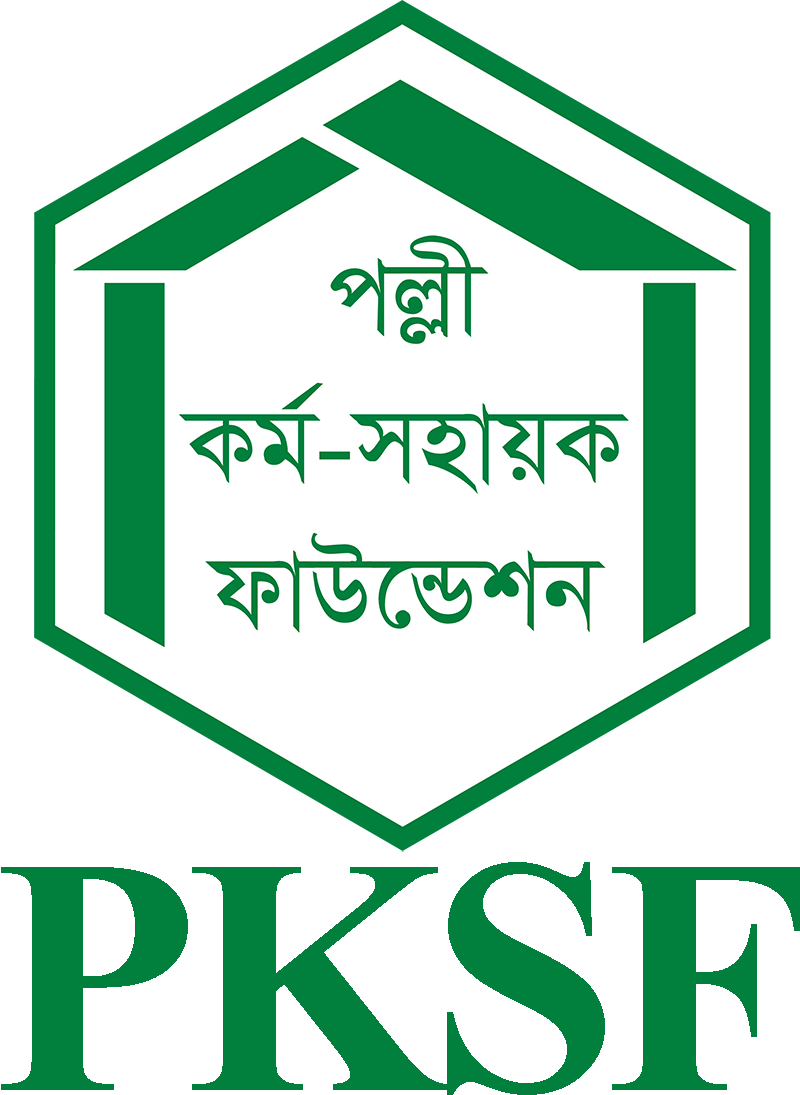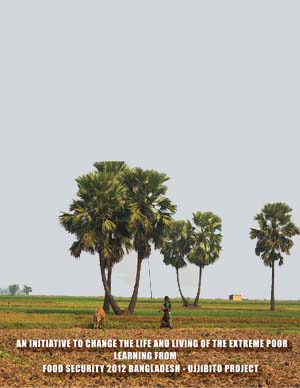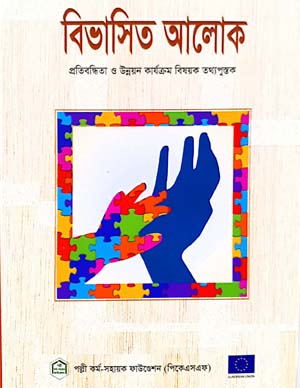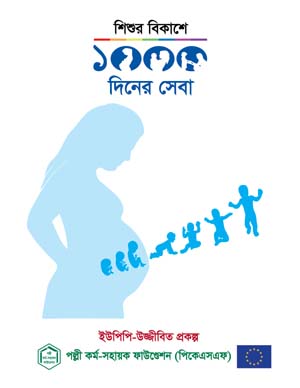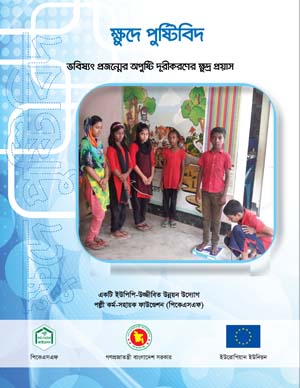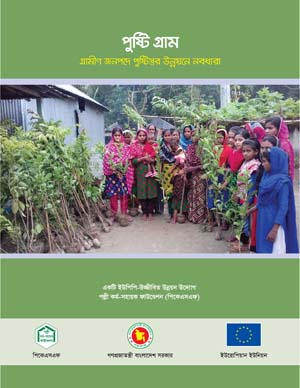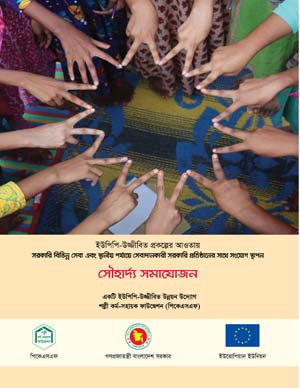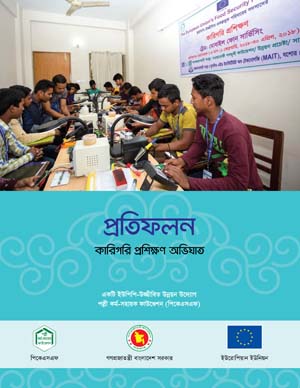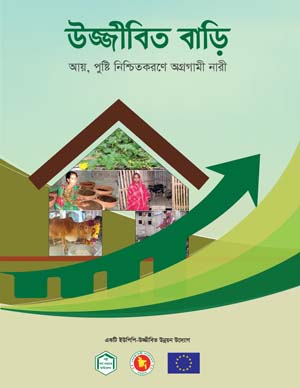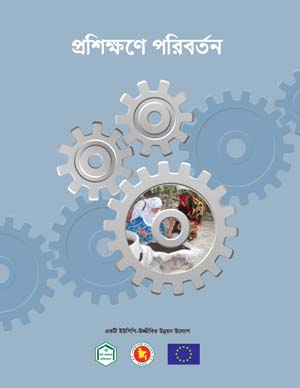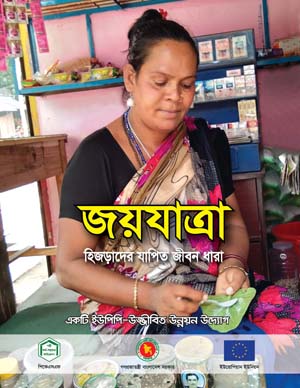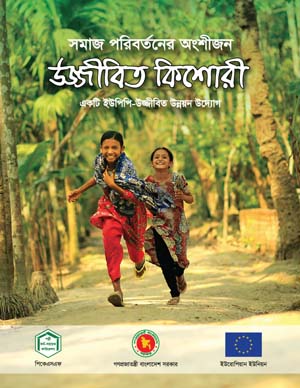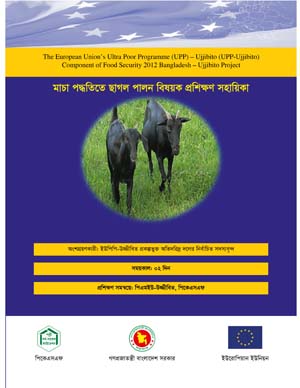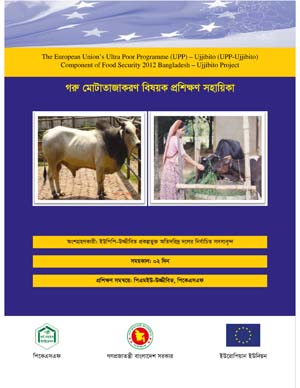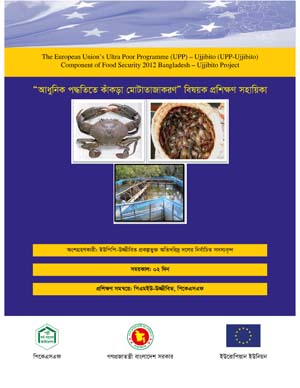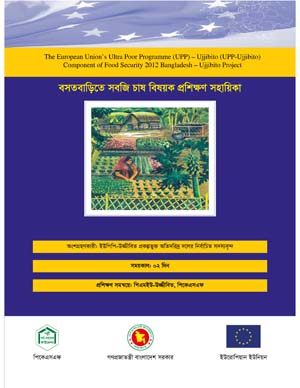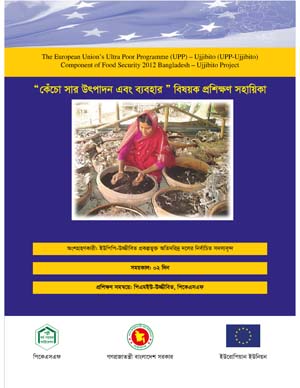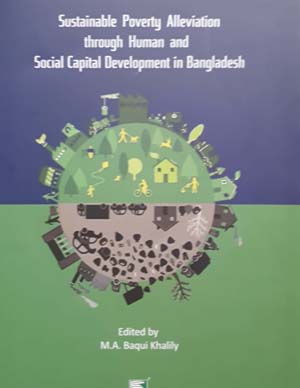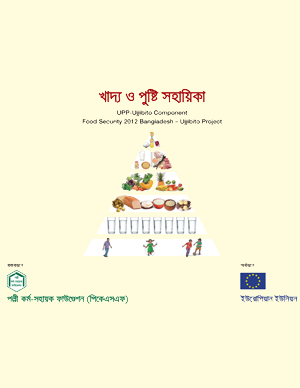Food Security 2012 Bangladesh-Ujjibito
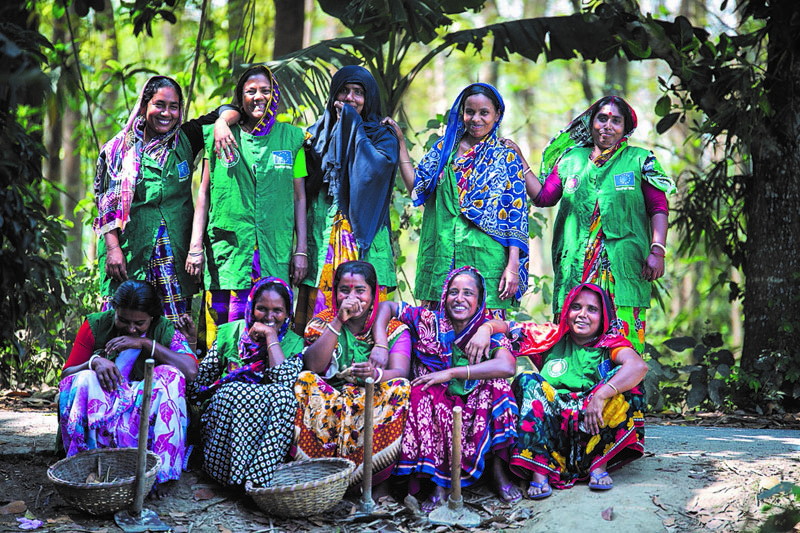
Funded by the European Union, the ‘Food Security 2012 Bangladesh-Ujjibito’ project was jointly implemented by Palli Karma-Sahayak Foundation (PKSF) and Local Government Engineering Department (LGED) from November 2013 to April 2019. It had two basic components: 1) cash for work, and 2) skills and capacity development as well as awareness raising activities for the extreme poor. LGED implemented Component 1 styled as ‘Rural Employment and Road Maintenance Programme-2 (RERMP-2), while PKSF realized Component 2 titled ‘Ultra Poor Program (UPP)-Ujjibito’. The UPP-Ujjibito has been implemented in 1,724 Unions of Bangladesh through 36 POs. The working areas include all unions of Barisal, Khulna and Rajshahi divisions, and the coastal Unions of Lakshmipur, Noakhali, Chattogram and Cox’s Bazar districts of Chattogram division. The project focused on reduction of hunger and poverty in Bangladesh in a sustainable manner. PKSF took various initiatives (e.g. agro-based, non-agricultural, technical training, technical assistance, awareness development, risk management fund etc.) for sustainable progress of approximately 325,000 extreme-poor households through ensuring nutrition security, developing capacity of purchasing power of non-food products, resource generation as well as improvement of social status.
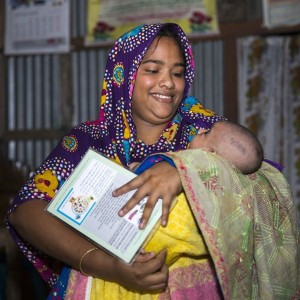 The Final Evaluation Report states that 183,000 households successfully graduated from poverty, and the remaining 142,000 extreme poor households have been enabled to enjoy sustainable and decent means of living, sustainable development of health and nutrition and increased participation in social activities and increased social empowerment. The realistic and effective innovative activities of the project can be replicated in other projects. These activities include ‘1000-day Special Health and Nutrition Service for antenatal, neonatal and child care’, Ujjibito Adolescent Clubs to increase health and social awareness, Alor Karkhana libraries for community-based knowledge sharing and social development at the local level, disability-friendly mobile training facilities, livelihood activities suitable for trans-gender for social inclusion, Ujjibito Primary and Secondary School Forums, and Ujjibito Nutrition Villages to raise the health and social awareness for children and adolescents. The Final Evaluation Report also concluded that self-employment training, technical assistance, and skill development training significantly accelerate the process of graduating from extreme poverty. Access to financial services makes a more effective impact when skill development training is tied to it. Multi-dimensional interventions like dietary diversity and women empowerment will make lasting impacts on sustainable poverty alleviation. Details are given below.
The Final Evaluation Report states that 183,000 households successfully graduated from poverty, and the remaining 142,000 extreme poor households have been enabled to enjoy sustainable and decent means of living, sustainable development of health and nutrition and increased participation in social activities and increased social empowerment. The realistic and effective innovative activities of the project can be replicated in other projects. These activities include ‘1000-day Special Health and Nutrition Service for antenatal, neonatal and child care’, Ujjibito Adolescent Clubs to increase health and social awareness, Alor Karkhana libraries for community-based knowledge sharing and social development at the local level, disability-friendly mobile training facilities, livelihood activities suitable for trans-gender for social inclusion, Ujjibito Primary and Secondary School Forums, and Ujjibito Nutrition Villages to raise the health and social awareness for children and adolescents. The Final Evaluation Report also concluded that self-employment training, technical assistance, and skill development training significantly accelerate the process of graduating from extreme poverty. Access to financial services makes a more effective impact when skill development training is tied to it. Multi-dimensional interventions like dietary diversity and women empowerment will make lasting impacts on sustainable poverty alleviation. Details are given below.
The Ujjibito project was designed to contribute to the process of sustainable poverty alleviation through investment in human capital and social capital development. Training for skill development for maximizing use of economic resources, and vocational training for employment were provided under the project. Social capital development takes place through promoting social awareness and organizing community-level network of girls (known as Kishori clubs) for enhancing knowledge on health and mother care, and building trust and solidarity in the community. There was no specific intervention for financial services as it was assumed that the participating members would have access to standard financial services of the micro finance institutions. Expected outcomes would be multidimensional: from economic wellbeing to health and nutritional wellbeing to social empowerment. All these three dimensions of outcomes were examined and assessed in the impact analysis of Ujjibito. Sustainable development framework was used to assess the outcomes and impacts.
Key Findings
Human Capital Development and Economic Wellbeing: Human capital development directly contributes to poverty alleviation through its multi-dimensional impacts. Ujjibito focused on human capital development by imparting training of different types[1] to the UPP-Ujjibito participating households. It would have, as argued in Chapter Three, two possible outcomes – employability and economic benefits. The data set allows to estimate impact of training on employability by comparing treatment households with and without training and also with control households with no training. Subsequently, it enabled to estimate impacts of training on different economic outcomes. The challenge was to estimate the effect of access to credit. Disaggregating borrowing households with and without training in terms of economic outcomes cancels out the effects of credit. A number of findings were derived from the analysis of economic impacts.
[1] Under the project, the UPP-Ujibito participants were offered different types of training. The RERMP households were have received a 2-day long basic IGA training while they are involved in two years of wage employment with LGED. The UPP-Ujjibito participants had access to different types of training: skill development for income generating activities, training for self-employment, vocational training for specialized employment, and general group development training. Control households had in general no access to training.
First, employability was higher for the households with training by some 15 percent compared to the control households with no training received. Similarly, the difference between the treatment households with and without training showed that the effect of training on employability was higher by some 13 percent. The econometric analysis, after controlling for adult family size and other variables, showed that the net effect of training on employability was around 10.5 percent for the treatment households with access to training compared to the control households with no training.
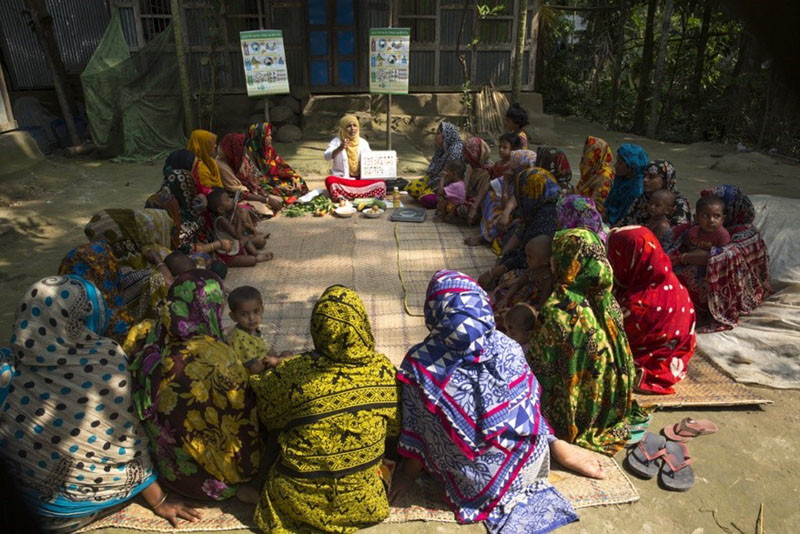
Second, the positive impact of the training and the program itself has been reflected in the average monthly income of the treatment households. Average incomes varied by access to different types of training. Under the assumption of homogenous control and treatment households in the baseline, the study shows that the average income of the treatment households (UPP-Ujjibito) was statistically higher than the average income of the control households. It was evident from the basic statistics and difference-in-difference estimates. Treatment households with vocational training and skill development training for self-employment had higher monthly average income compared to other groups. Similar finding was also evident in case of the per-capita income.
Third, because of the higher income, the average monthly expenditure was higher among the treatment group compared to the control household. Similar pattern was found in case of savings and investment. Outcomes varied by types of training: treatment households with access to training for self-employment and vocation training had higher economic outcomes than the control and the RERMP households.
Fourth, training and in turn economic outcomes had contributed to intensity of poverty reduction. The intensity of poverty of UPP-Ujjibito by types of training was lower than the RERMP and control households. The lowest incidence of poverty was evident for the treatment households with access to vocational training (28 percent), followed by 38.6 percent for the treatment households with training for self-employment. Among the UPP-Ujjibito households, the households with group development training had higher intensity of poverty (41.4 percent). Such incidence of poverty has been measured based on the cost of basic needs method.
Therefore, the economic analysis lucidly reveals that intensity of economic gains was higher for the UPP-Ujjibito households with access to skilled development training for self-employment and vocational training. Largest gains were evident for the participants with vocational training. This is also corroborated by our field level observations. In brief, investment in human capital development has contributed to positive economic outcomes and poverty reduction.
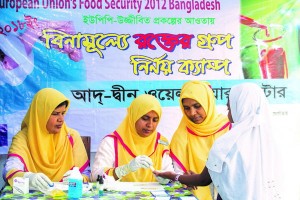 Nutritional Knowledge and Dietary Diversity: Lack of dietary diversity has adverse impacts on growth and nutritional deficiency of children, and women health. Research conducted in different countries show positive impacts of dietary diversity on health, nutritional status, micronutrient intake, among others (e.g., Moursi et. al. 2008; Ochieng et. al. 2017; Nithy 2018). Given the importance of dietary diversity, several approaches were taken under the project to contribute to health and nutritional wellbeing: new knowledge about family planning, birth spacing and primary health care; and new knowledge on both nutritional foods and production of homestead vegetables and eggs for nutritional inputs. Several important findings were derived.
Nutritional Knowledge and Dietary Diversity: Lack of dietary diversity has adverse impacts on growth and nutritional deficiency of children, and women health. Research conducted in different countries show positive impacts of dietary diversity on health, nutritional status, micronutrient intake, among others (e.g., Moursi et. al. 2008; Ochieng et. al. 2017; Nithy 2018). Given the importance of dietary diversity, several approaches were taken under the project to contribute to health and nutritional wellbeing: new knowledge about family planning, birth spacing and primary health care; and new knowledge on both nutritional foods and production of homestead vegetables and eggs for nutritional inputs. Several important findings were derived.
First, the project has made significant impact on nutritional knowledge of the beneficiary women. In particular, the level of awareness about symptoms of malnutrition and child malnutrition prevention methods is higher among the participating households (RERMP and UPP-Ujjibito) compared to the control households.
Second, the probability of homestead vegetable production is also higher among the participating groups of two programs compared to the control households. Similar findings also emerged in the case of milk and egg production. However, it was statistically significant for the UPP-Ujjibito beneficiaries only.
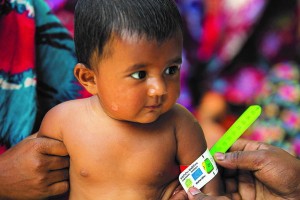 Third, the consumption of food basket of the UPP-Ujjibito is consistent with their better nutritional knowledge and higher outputs from homestead vegetable and milk and egg production. This means that they have attained higher dietary diversity. But this is not true for RERMP and control households. The results are quite similar in case of the dietary diversity of children.
Third, the consumption of food basket of the UPP-Ujjibito is consistent with their better nutritional knowledge and higher outputs from homestead vegetable and milk and egg production. This means that they have attained higher dietary diversity. But this is not true for RERMP and control households. The results are quite similar in case of the dietary diversity of children.
Fourth, there is a positive association between dietary diversity of women and their nutritional knowledge suggesting that increased awareness about nutrition may be considered as one of the channels of improvement in dietary diversity of women.
Finally, the program has a positive impact on nutritional status of children though the evidence is not quite strong in terms of statistical significance. Based on both bivariate and multivariate results, the program has shown some sign of improvement of health and nutritional wellbeing of the participating households through improving dietary diversity, and reducing stunting, wasting, under-weight and BMI.
Social Capital Development and Women Empowerment: Social capital emerged as an issue in poverty alleviation following the global movement towards poverty alleviation through micro finance. Group development of the poor was considered as social capital. Micro credit is also considered as a social capital because of non-commercial approach to poverty alleviation. Both the group and access to credit have contributed to women empowerment. It has contributed to women empowerment because most members are women, and group meeting takes place at a regular interval e.g., weekly. As such, women have external mobility and they play critical role in household level decision-making because of economic and financial contribution. But there are social network of poor households or women at the community level that build trust and create confidence, and act as a platform for dissemination of information, activism against violence, among others. It is more than the micro finance groups. Cooperative or women club or girls’ club can be an example of social network.
Development of social network is an intervention under the Ujjibito. Social empowerment of the participating households and women was considered as an important goal. Increasing social awareness was the process of attaining such goal. It was measured in terms of freedom of women’s movement, decision making, upward social mobility, political participation and participation in group meeting, relationship of the borrowing woman with husband and family, restrictions on visiting parent’s house, free movement outside of home, and access to different socio-economic institutions and participation in community activities. These indicators were used in assessing women empowerment. In addition to empowering participating women, adolescent girls and young women were considered as conduit for long run impact of women empowerment. Under the Ujjibito, adolescent girls’ clubs have been organized in program villages. These clubs are equipped with basic information related to their rights and responsibilities, they can address the issues and overcome the concerns effectively.
The program interventions have socially empowered participating households and women. This is true for both RERMP and UPP households compared to the control households. The findings were established using both descriptive statistics and field level observations. The cases amply document the evidences of positive impacts of Ujjibito on social wellbeing and women empowerment.Kishori club, one of most successful interventions, works as the source of alor karkhana, factory of enlightening women in the context of economic and social empowerment. This issue has been econometrically examined.
Impact of Kishori Club on Women Empowerment: Social capital appeared to have impact on women empowerment. Kishori club is a network of girls of both targeted (poor) and non-targeted (non-poor) households in a village. Functionally, the clubs disseminate information on mother and child care after birth, provide basic primary health care services, build bondage and trust among the members through regular meeting and socio-cultural activities, engage in activism against early marriage and social and family violence. Women empowerment was measured in terms of score constructed based on subjective responses of women respondents. Three separate scores were constructed: the composite women mobility score, the composite women involvement in purchase score, and the composite women decision-making score. Finally, an aggregate women empowerment score was generated based on these three dimensions of women’s empowerment from the agency point of view.
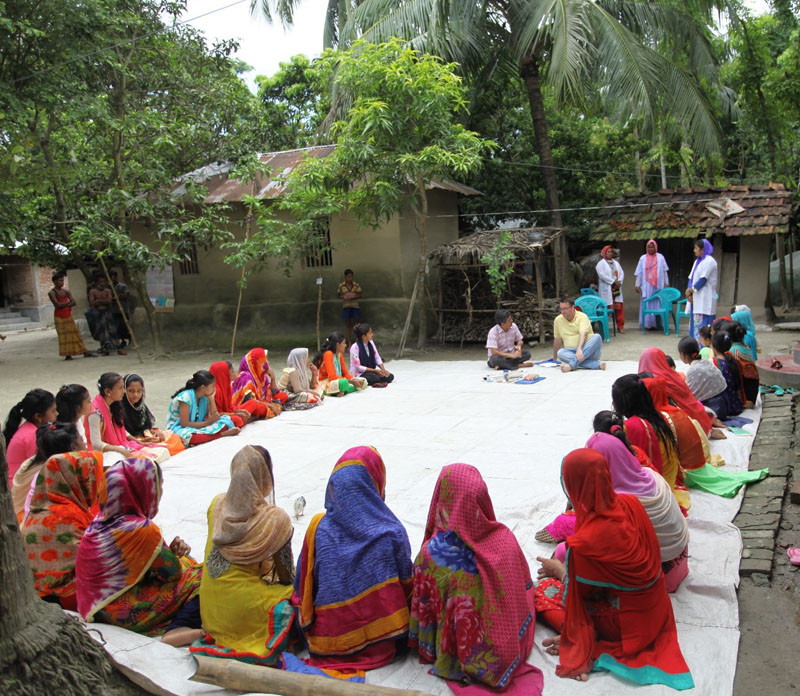
The descriptive and econometric analysis provides three key findings. First, the Ujjibito program has positive impact on women empowerment. Second, women in RERMP are marginally more empowered than the UPP-Ujjibito beneficiaries. Third, adolescent girls (Kishori) club has a positive impact on empowerment of mothers. Finally, a comparison between UPP-Ujjibito beneficiaries and control group women suggests that impact of the program on women empowerment is strengthened by the participation of daughters’ in adolescent girls’ club. These evidences suggest that social capital development does contribute to women empowerment.
Impact on RERMP Households: RERMP is one of the two sub-components of the Ujjibito project with the provisions for daily wage payment and cash savings for two years. The design required cash wage payment of BDT 100 (equivalent USD 1.25) and forced savings of BDT 50 every day. What has been its impacts? Several important evidences were reported in different Chapters. The key evidences are drawn.
First, it has contributed to increase in number of earning members. Second, it may have contributed to increase the household level monthly income, but the gains are lower than the UPP-Ujjibito households with access to different training interventions. It is perhaps due to lower wage payment, lower than the market wage in the area. Third, because of relative lower income, it has not gained much in dietary diversity to suggest that it is better for the UPP-Ujjibito households. Fourth, the RERMP households are more socially empowered than the other comparison groups. The participating women are more empowered because of their regular interaction with external environment and freedom to move alone. It may be mentioned here that the RERMP households are the most vulnerable extreme poor households. Despite regular wage employment and forced cash savings for two years, intensity of food poverty is still higher than the UPP-Ujjibito and control households. Around 20 percent of the RERMP households were still in the state of food insecurity at the time of end-line survey.
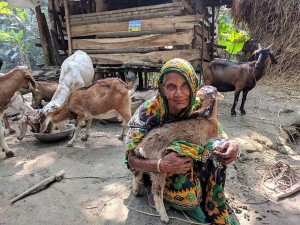 The findings reveal that investment in human capital and social capital contribute to increasing economic, health and nutritional, dietary diversity, and social wellbeing. Social capital development is perhaps a very powerful intervention or instrument to bring long-term and lasting impacts in socio-economic, health and nutritional wellbeing as well as in ensuring human rights. In terms of the SDGS, the project has directly contributed to attain six critical goals: contribution in reducing poverty (SDG-1), removing hunger (SDG-2), improving health and nutrition (SDG-3), wellbeing, increasing knowledge and skills (SDG-4), increasing women empowerment (SDG-5), and reducing inequality (SDG-10). These gains have certainly contributed to reducing inequality in the society. The critical question is, have all these achievements contributed to sustainable poverty alleviation? The question has been addressed by correlating the three dimensions with multi-dimensional poverty.
The findings reveal that investment in human capital and social capital contribute to increasing economic, health and nutritional, dietary diversity, and social wellbeing. Social capital development is perhaps a very powerful intervention or instrument to bring long-term and lasting impacts in socio-economic, health and nutritional wellbeing as well as in ensuring human rights. In terms of the SDGS, the project has directly contributed to attain six critical goals: contribution in reducing poverty (SDG-1), removing hunger (SDG-2), improving health and nutrition (SDG-3), wellbeing, increasing knowledge and skills (SDG-4), increasing women empowerment (SDG-5), and reducing inequality (SDG-10). These gains have certainly contributed to reducing inequality in the society. The critical question is, have all these achievements contributed to sustainable poverty alleviation? The question has been addressed by correlating the three dimensions with multi-dimensional poverty.
Key Publications under the Project:
